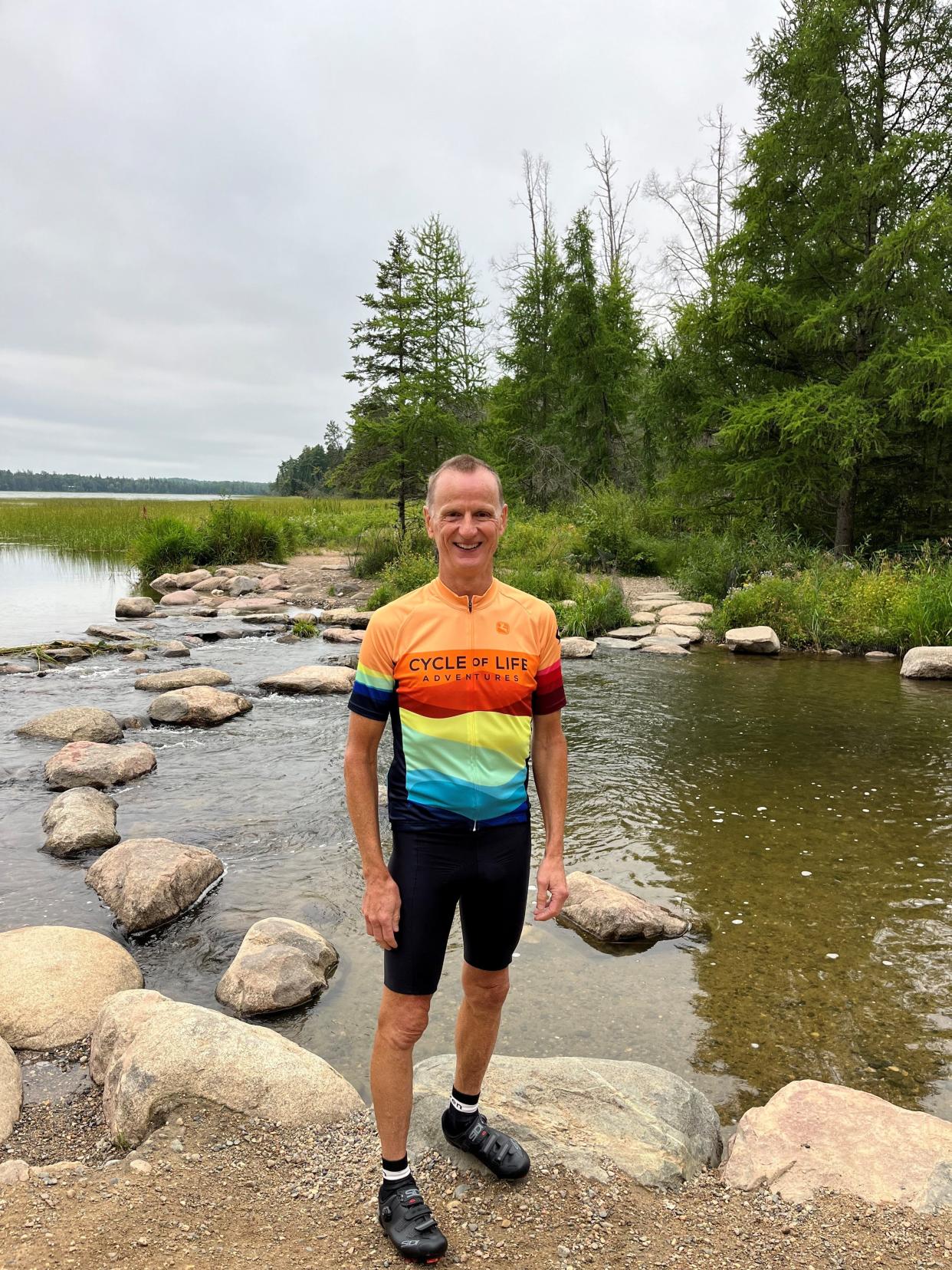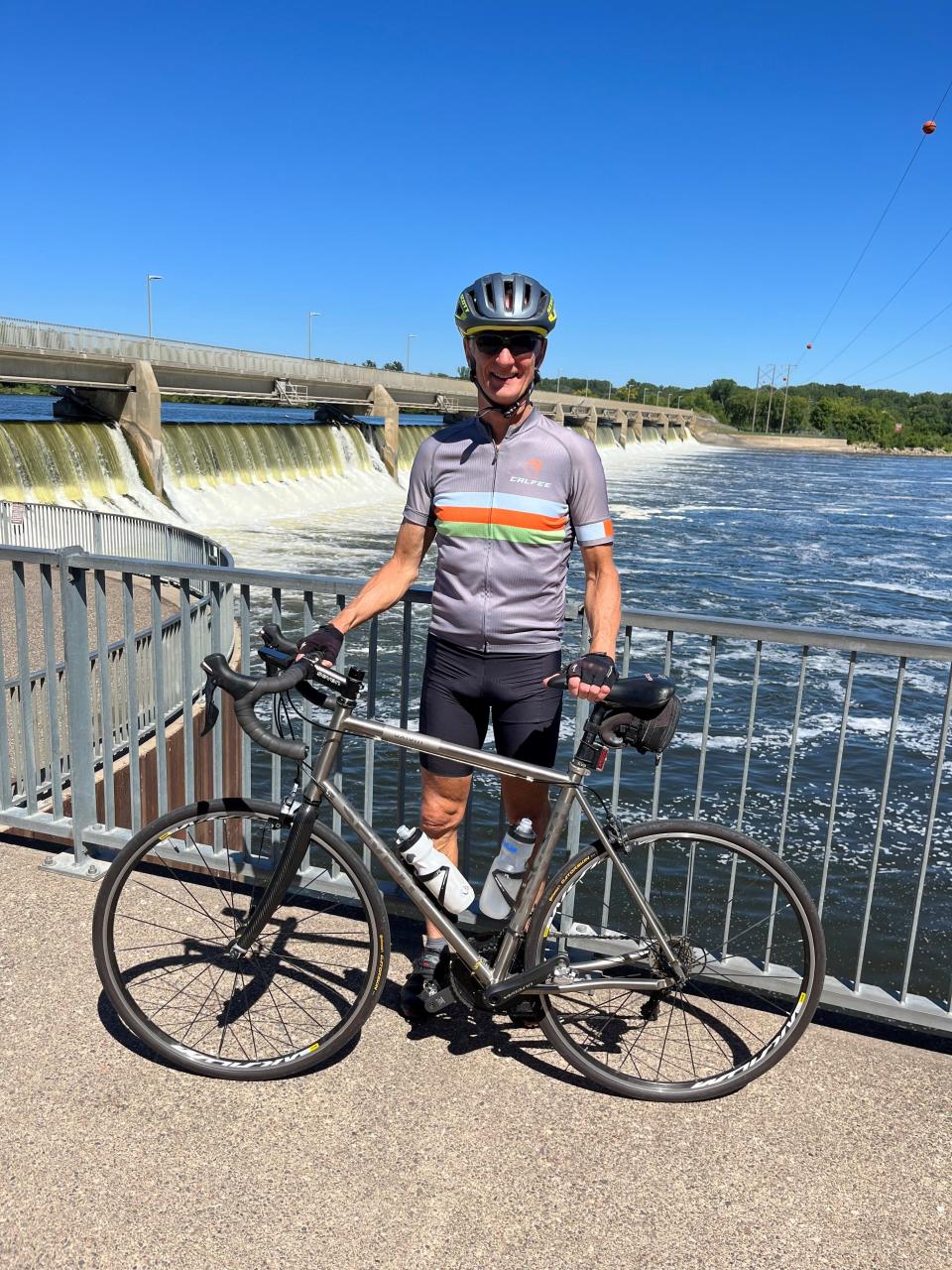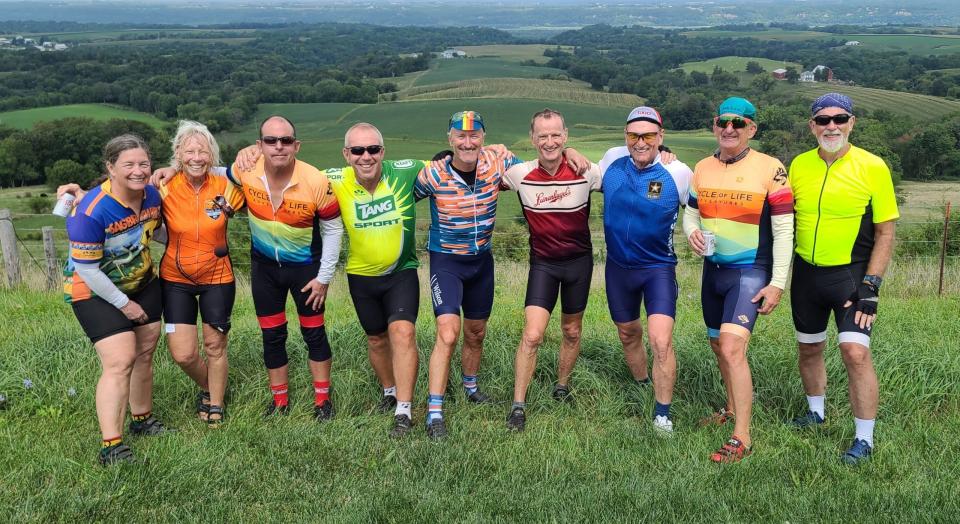A Wisconsin man saw the 'natural wonder' of the entire Mississippi River, all by bike

In late August of last year, Roger Gray hopped across eight rocks at the mouth of the Mississippi River where it begins at Lake Itasca in northern Minnesota. Those eight rocks are all it takes to get from one side of the river to the other.
A month later, he found himself in New Orleans, where the river — at that point, about a half-mile wide — spills into the Gulf of Mexico.
Gray, a 63-year-old ophthalmologist from Rice Lake in northwestern Wisconsin, didn't fly the 2,000-plus miles that the river runs south. He didn't go by boat. He didn't even drive the Great River Road.
He biked.
Over the course of 33 days, Gray and seven other cyclists from across the globe made their way downriver, biking an average of 75 miles per day. They took off in the early morning and pedaled until dinnertime, when they settled in for the night.
Beyond the physical feat and friendships formed with his companions, Gray said the experience made him think differently about the river as an economic resource and an environment to be enjoyed and protected. Since returning, he said, he consumes as much Mississippi River information as he can, because now it hits home.
"It's a natural wonder," he said. "I'm glad I got to experience the whole river."

Gray said he was likely the least experienced biker on the trip, which the North Carolina-based Cycle of Life Adventures put on. Still, he had put his fair share of miles in ahead of time. He and his wife have traveled the world by tandem bike for 25 years, in the U.S. and Europe and even New Zealand. The river trip was his first solo venture, which he said he took because he wanted to set a big personal goal and meet it.
In the northern stretches of the journey, the group was able to ride right along the river. Following a day off in St. Paul — where Gray said he took the opportunities to show his fellow bikers a "real" state fair — they crossed from Minnesota into Wisconsin at La Crosse and exited the state about 60 miles south at Prairie du Chien, where they crossed into Iowa. The forests and lakes of northern Minnesota and the iconic bluffs of the Driftless region made for gorgeous riding, he said.
Further south, they saw less of the river on a daily basis because of the increasing number of industries built up around it. The river becomes busier in its lower reaches with barge traffic hauling goods upstream and downstream. The group talked often about how hard-working the river is in that way, Gray said, noting barges lined up for miles transporting corn, soybeans, cotton, sugarcane and petroleum products — the latter especially noticeable in New Orleans.
"When we're at home, we just go buy gas. We don't think anything of where it comes from," he said. "Well, I saw where it comes from."
They began to track the confluences with other major rivers, like the Missouri River and the Ohio River, and better understand the consequences of the Mississippi River being a drainage basin for 31 states. Down south, it seemed that pollution and industry kept the river from being used recreationally, as is common up north, Gray observed.
It served as a good reminder that humans have to take care of it as the years go on, preserving water resources for those who are coming after them, he said.
The ground they covered shifted with geography, from bike trails to four-lane highways to the flat levees in Mississippi, Arkansas and Louisiana that block the river off from surrounding communities. In Mississippi, they stopped in Vicksburg to see the Civil War battlefield, and rode on the Natchez Trace Parkway, a historic corridor first used by Indigenous people, and later by settlers and traders.

They also biked over countless bridges, joining one state with another over the river, which Gray said was a fascinating architectural experience. It was particularly fun to bike through larger cities along the route, Gray said, like St. Louis — where they stopped for a Cardinals' game — and Memphis, where they listened to music and ate ribs and shrimp étouffée.
The group ate local often along the route, and Gray put an emphasis on fish. In Wisconsin and Minnesota it was walleye, prepared several different ways. In Iowa and Illinois, it was salmon. And as they rode further south, they consumed catfish and redfish.
Gray said it's hard to pick a favorite part of the journey because each day was so different. And the weather gods, for the most part, smiled down on them. It rained just one evening, but they endured three days of hundred-degree temperatures in Mississippi. Each of those days they rode about 100 miles, he said.
Another perk was knowing practically everything about his companions by the time they parted ways — getting to hear about their other traveling experiences and also learning about their day-to-day lives. Making new friends well into adulthood is rarer, he said, so it felt special.
About 2,100 miles later, Gray hopped a flight in New Orleans and headed back home to Wisconsin at the end of September. But the vastness and the importance of the river are still on his mind. He said he hopes to redo some of it by bike with his wife so that he's able to show her his favorite parts of the journey.
"My goal in the future is to explore more of it," Gray said, "this natural beauty right down the center of our country."
Madeline Heim is a Report for America corps reporter who writes about environmental issues in the Mississippi River watershed and across Wisconsin. Contact her at 920-996-7266 or mheim@gannett.com.
This article originally appeared on USA TODAY: Wisconsin man takes month-long bike trip along the Mississippi River

